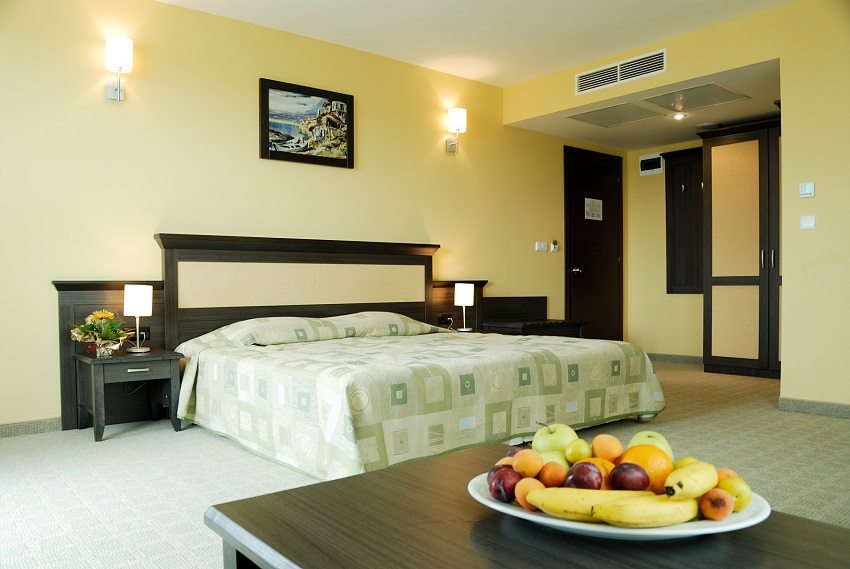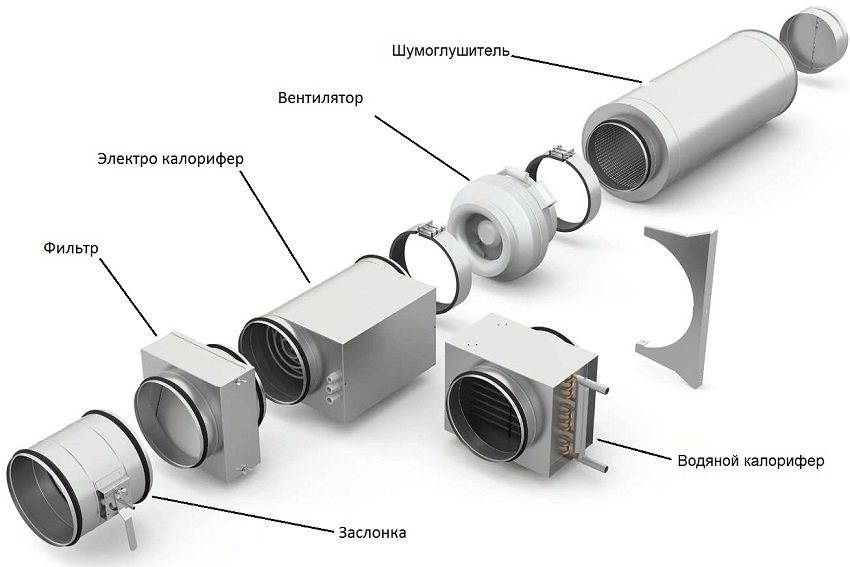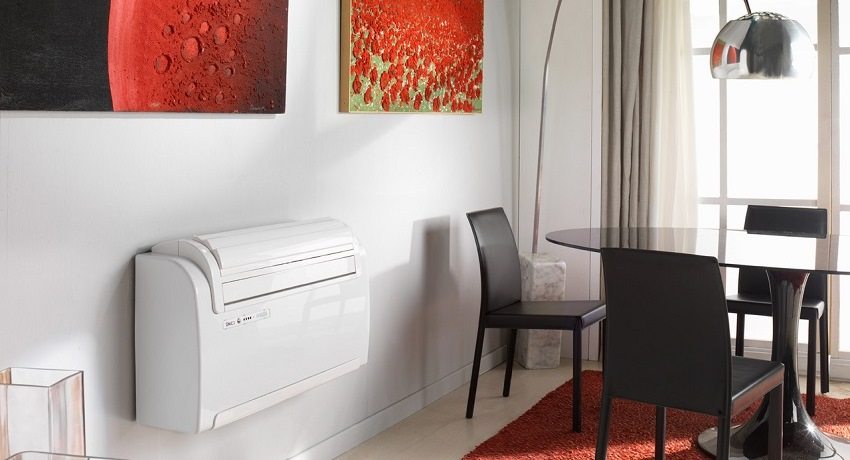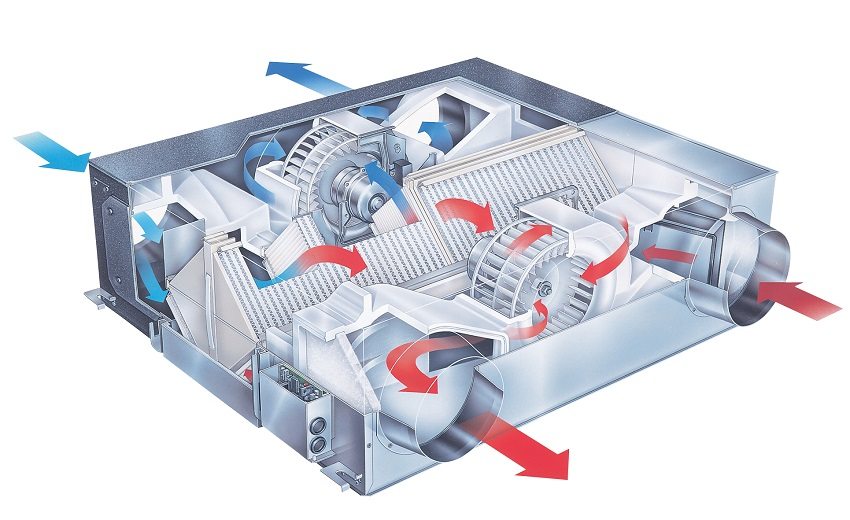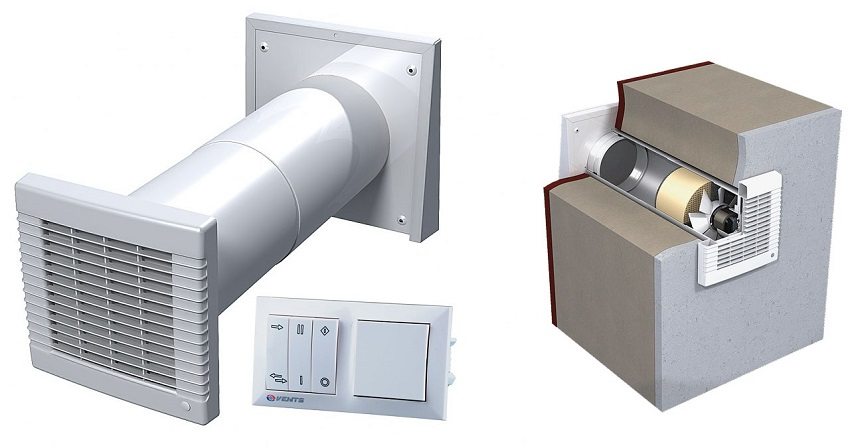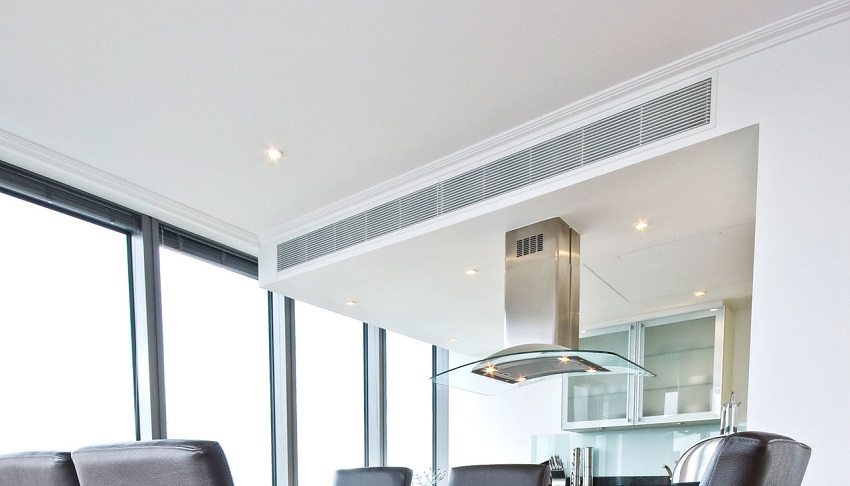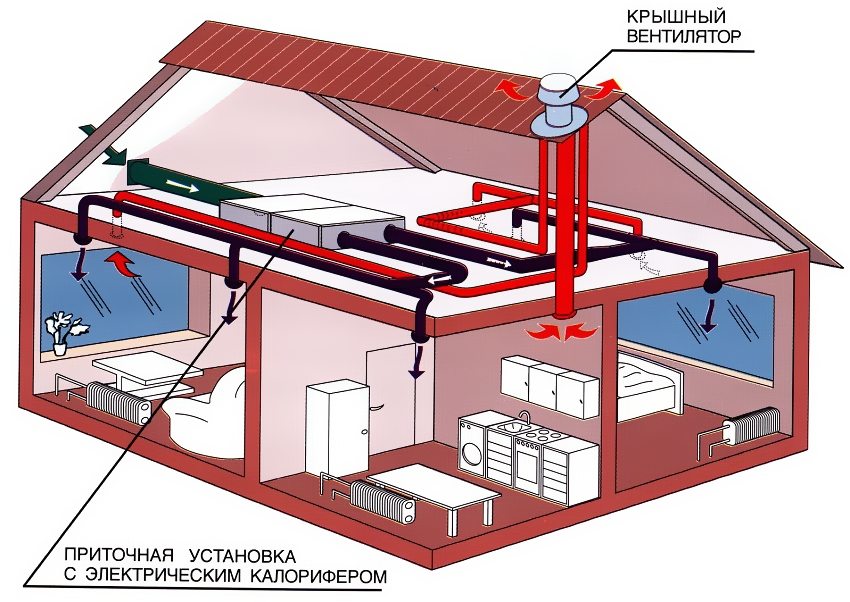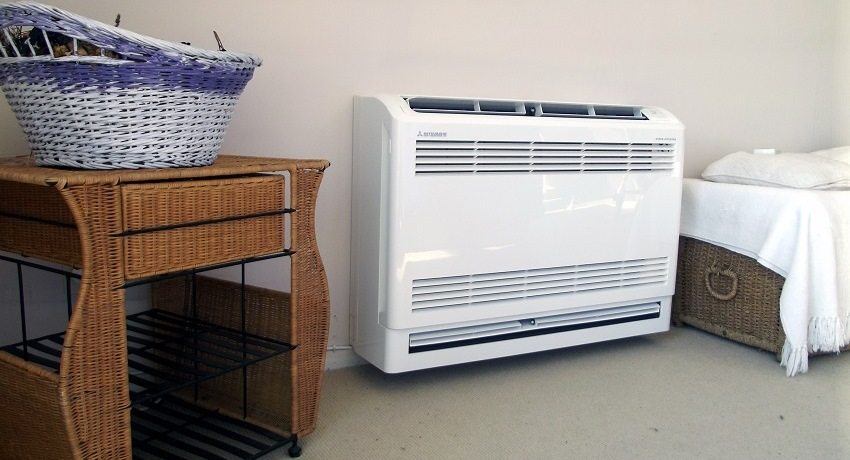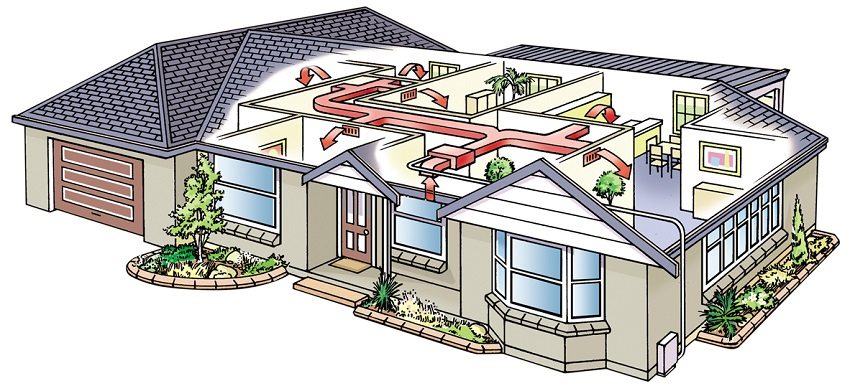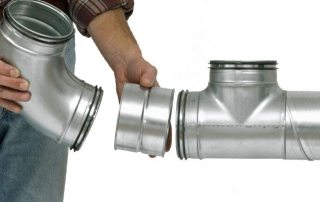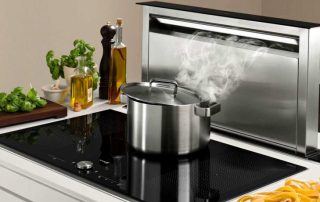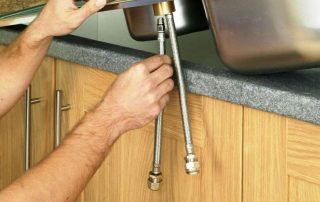To organize a healthy microclimate in the premises, ventilation systems are used, which are one of the most hygienically correct ventilation solutions. Supply and exhaust ventilation, in essence, is designed not only to provide an inflow of fresh air, but also to simultaneously remove exhaust air masses from the room. In addition, such systems can reclaim the heat or cold of the used air.
Content [Hide]
Advantages of air handling units
Supply and exhaust ventilation systems refer to ventilation with a balanced exchange of intake and exhaust air. Supply and exhaust ventilation is used in houses, apartments, offices and industrial premises. Therefore, the design of such systems is carried out for the immediate needs of certain premises. The system can consist of separate supply and exhaust units with a common supply and exhaust chamber or of elements assembled in one compact supply and exhaust ventilation unit (monoblock), where air is supplied and removed.
The main advantages of such installations include:
- modular system that allows you to take into account the elements of the required capacity in the project;
- absolute harmlessness of materials of manufacture;
- purification by filtration of the supply air, its heating, cooling, and sometimes humidification;
- long service life (in case of correct design and correct installation);
- economy (use of heat recovery).
For ventilation systems of large industries or large offices, as well as premises of shops, cafes, impressive private cottages, a competent project should be made. The need for the design of supply and exhaust ventilation is caused by the need to minimize costs during the operation of units.
Supply and exhaust ventilation. Types of ventilation systems
Depending on the requirements for different premises, supply and exhaust ventilation is classified according to the configuration and functional features.

The ventilation system will provide purification of the supply air by filtration, heating, cooling, and sometimes humidification
Supply and exhaust ventilation system with recuperator
The main function of supply and exhaust ventilation with heat recovery is to provide fresh and at the same time warm air in the cold season, and cooled - in the hot season.
Related article:
|
This system is designed in such a way that in winter, the flow of warm exhaust air is not simply discharged outside, but passes through the heat exchange unit and gives up its heat to the incoming cold air. As a result, the room is saturated with fresh, but already warm air. In summer, the reverse process takes place, in which the incoming air is already cooled. Moreover, the installation scheme is such that both streams (incoming and outgoing) do not mix with each other.
The heat recovery process is provided by a special device - recuperator... There are two types of recuperators: rotary and plate. The plate heat recuperator is included in the ventilation project in regions where winters are not so severe. Such a device is economical in cost and copes well with heat recovery at minus temperatures up to 15 degrees. Rotary units are used for ventilation units used in areas with colder winters. They are more costly, but effective, and pay off by saving on space heating.
Supply and exhaust ventilation systems with heat recovery are widely used at various facilities: houses, country cottages, offices, hotel and restaurant chains, sports complexes, industrial buildings.
Supply and exhaust ventilation system with air conditioning
Supply and exhaust ventilation with air conditioning combines a ventilation system and air conditioning in one heat-insulated block with built-in automation. This ventilation system provides a direct flow of heated or cooled air. It has several ventilation and air conditioning power modes that are set automatically. This is due to the regulators that check the state of the microclimate in the room and, depending on this, one or another mode is assigned.
Supply and exhaust ventilation units with air conditioning are distinguished by their high performance and have a number of significant advantages:
- no need for external pipeline networks and remote blocks;
- insignificant degree of noise;
- small size and weight;
- ease of management.
Automation allows you to make the settings so that the user does not need to change the settings during the entire operation of the device, regardless of the season.
Forced cooling ventilation system
Air handling units can be used for efficient air cooling during the hot summer period. Such installations are additionally equipped with various types of cooling equipment:
- water cooling unit;
- compressor and condensing unit;
- unit for combining refrigeration machine and heat pump (chiller fan coil system).
One of the most commonly used cooling methods in ventilation is connection to cold water supply, due to which the supply air stream is cooled to the required temperature. Such systems are most rational for large objects or rooms where food storage is provided, and are not used in homes and offices.
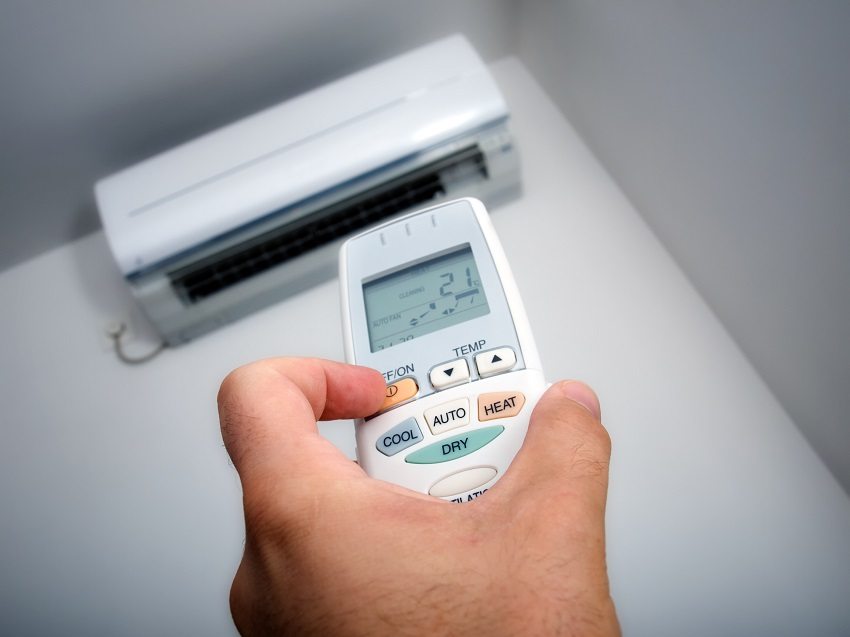
Automatic control of the ventilation system makes it easy to create a comfortable living environment
General exchange supply and exhaust ventilation systems
General ventilation is used when moisture, heat, gases, vapors, odors generated in the room spread throughout the room. The project calculates the amount of removed (exhaust) air, which would ensure the sanitary and hygienic parameters of the air inhaled by a person.
Traditionally, the volume of extracted air is equal to the volume of supply air. However, in hazardous industries, a larger volume is pulled out to block the spread of a contaminated harmful flow throughout the room. Then the lack of air is compensated for by the inflow (pumping) from nearby, cleaner rooms or by opening windows and doors.
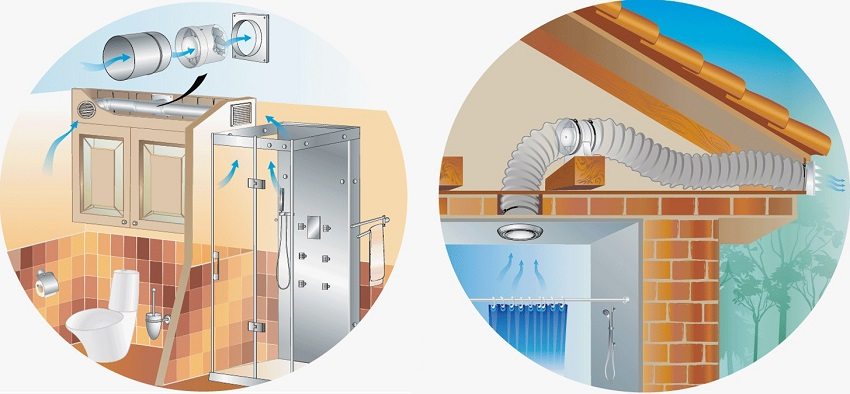
Example of arrangement supply ventilation in bathrooms
If there is a lack of heat in the room, general ventilation is arranged using a mechanical method and heating the entire supply air flow. In addition, the outside air is purified.
One of the simplest methods of general ventilation is the use of a fan for supply and exhaust ventilation. It is installed in a window opening or wall opening. This installation allows you to extract air from the nearest polluted area for general air exchange.
Useful advice! Using the fan of the air handling unit, you can significantly increase the speed of exhausting air contaminated with harmful substances.
If harmful heavy gases are emitted in the workshop during production, the project proposes to make exhaust ducts on the floor or in underground channels. In such premises, where it is not possible to localize harmful emissions, general exchange exhaust ventilation systems are used.
Supply and exhaust ventilation. How to calculate, assemble and install
Supply and exhaust ventilation parameters are calculated taking into account the internal volume of the entire room. Having calculated the volume of all rooms, the indicators are summed up. According to the norms, the air in the room should be completely renewed within two to three hours. We find out their performance in the passport data of the fans. And already from it we subtract 50 m³ (lost during filtration and moving along the duct).
Further, ventilation is designed. The project should take into account the range of rooms where the flow process will be slowed down (up to 18%) than in the room where the input is located.
Supply and exhaust ventilation in an office or in your own home can be assembled and installed independently. It is important for the project to correctly calculate all the parameters of the installation.
For example, if the volume of the entire room is 1000 m³, then the standard air flow is approximately 500 m³ / hour. This indicator can be achieved by applying the appropriate diameter pipes air duct in combination with the power of the fans.
Should make a diagram of supply and exhaust ventilation so that the air intake grille and fan are mounted on the north side. A filter is installed after the fan. When assembling the system, outlets are arranged from the main duct into each separate room. As a block of the main air duct, you can use a regular refrigerator, where the air will be heated or cooled. In summer, when the unit is turned on, the air will be cooled, and in the cold season you can use air heater, which will give off heat to the supply air. You can in fridge place an ultraviolet lamp for additional processing of the outside air.
Useful advice! Attention should be paid to the fact that when using additional ventilation elements, the air flow and its speed will change downward.
Depending on the needs, supply and exhaust ventilation can be supplemented with various devices. Proper placement of the inlet and outlet of the used air remains essential.
Repair and maintenance of the ventilation system
Failures in the supply and exhaust ventilation system usually occur during improper operation, therefore, equipment should be repaired and maintained. System maintenance mainly consists of cleaning or replacing filters.
Routine ventilation repair is carried out by replacing or simple repair of blocks and individual parts. Depending on the malfunction in the connections, they can be repaired using a pipe soldering iron or sealant.
In the event that serious breakdowns or malfunctions are found in the system, it is recommended to carry out a major overhaul. To carry out high-quality overhaul, professional specialists are involved.
Useful advice! Timely replacement of filters, as well as carrying out the necessary maintenance of the supply and exhaust ventilation fans, contribute to the uninterrupted and long-term operation of the unit.
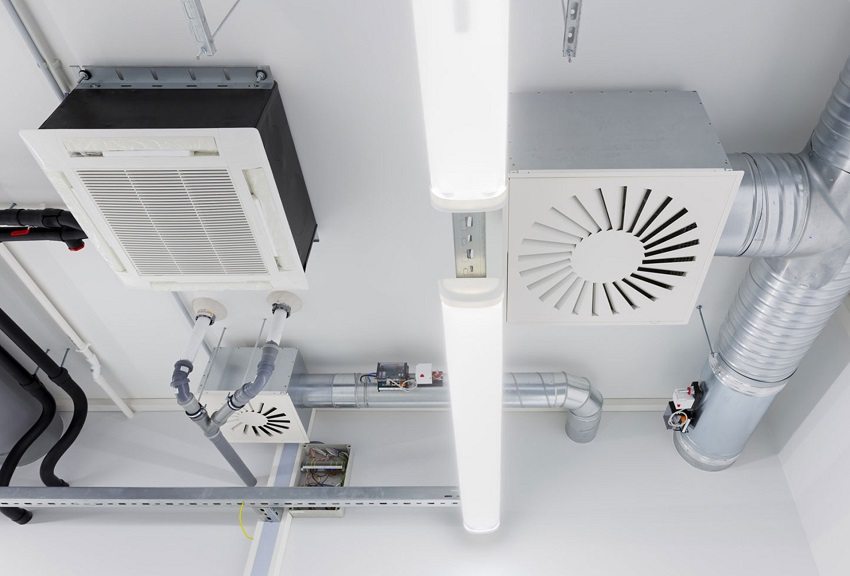
In order for the ventilation systems to work properly, it is necessary to regularly carry out their maintenance, as well as change filters
When self-installation, it is necessary to provide for the location of the elements of the air duct system, convenient for repair and maintenance of ventilation. After repairs, check the tightness of all structures, which is a guarantee of the correct functioning of the ventilation system.
A properly designed and installed supply and exhaust ventilation unit will help you get rid of the lack of fresh air forever and remove unnecessary odors outside.

